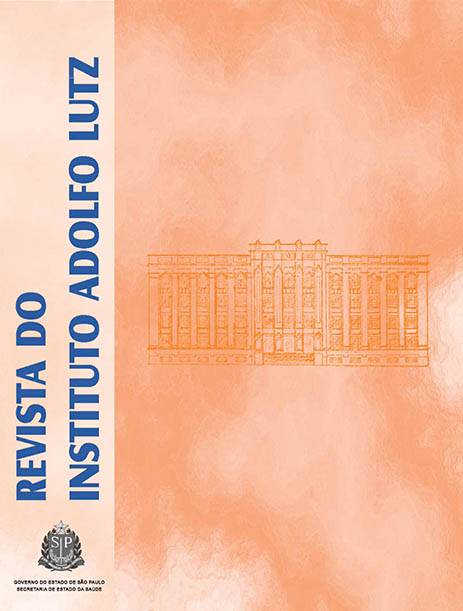Abstract
Chocolate is one product responsible for causing major outbreaks of salmonellosis in humans, although little is known about the presence of enteropathogens in chocolate produced in Brazil. In this context, the present study investigated the occurrence of total enterobacteria, coliforms, Escherichia coli and Salmonella in 65 samples of chocolate (22 milk chocolate, 22 white chocolate, 17 dark chocolate and 4 chocolate powder) marketed in Campinas/SP. The samples showed mean values of pH from 5.8 to 7.5 and water activity from 0.31 to 0.59. No fecal coliform, E. coli and Salmonella were isolated from the analyzed samples. Nevertheless, total enterobacteria were detected in 22.7% of milk and white chocolate and in 11.7% of dark chocolate samples. Total coliforms were isolated from 13.6% and 4.5% of milk and white chocolate samples, respectively. Neither total enterobacteria nor total coliforms were detected in chocolate powder samples. These findings reinforce the need for implanting a strict program of good manufacturing practices for chocolate processing to ensure the microbiological safety of these products.References
1. ICCO (International Cocoa Organization) Annual Report 2007/2008. [acesso 2012 jul 12]. Disponível em: [http://www.icco.org].
2. EC (European Commission). Salmonella in Foodstuffs. Opinion of the Scietific Committee on Veterinary Measures Relating to Public Health, 2003. [acesso 2006 nov 22]. Disponível em: [http://ec.europa.eu/food/fs/sc/scv/out66_en.pdf ].
3. Agência Nacional de Vigilância Sanitária. Consolidação de surtos e emergências em saúde pública. COVEHMS. Sistema de Vigilância Sanitária do Ministério da Saúde. [acesso 2009 jun 20]. Disponível em: [http://www.anvisa.gov.br].
4. Podolak R, Enache H, Stone W, Black DG, Elliot P. Sources and Risk Factors for Contamination, Survival, Persistence, and Heat Resistance of Salmonella in Low – Moisture Foods. J Food Prot. 2010;73(10):1919-36.
5. Izurieta WP, Komitopoulou E. Effect of moisture on Salmonellaspp. heat resistence in cocoa and hazelnut shells. Food Res Int. 2011; doi:10.1016/j.food.res.2011.09.024.
6. Werber D, Dreesman J, Feil F, Treeck UV, Fell G, Ethelber GS. International outbreak of Salmonella Oranienburg due to German chocolate.BMC Infect Diseases.2005;5:7-17.
7. Cordier JL. HACCP in the chocolate industry. Food Control.1994;5:171-5.
8. International Commission on Microbiological Specifications for Foods – ICMSF, Microrganisms in Foods 8 – Use of data for assessing process control and product acceptance. Nova York: Springer; 2011.
9. Food and Drug Administration. Bacteriological Analytical Manual Online, 2005. [acesso 2008 jan 15]. Disponível em: [http://www.cfsan.fda.gov/ebam/bam-5.html].
10. Instituto Adolfo Lutz. Métodos físico-químicos para análise de alimentos: normas analíticas do Instituto Adolfo Lutz. 4. ed. Brasília: Anvisa; 2005. p. 104-5.
11. Hiramatsu R, Matsumoto M, Sakae K, Miyazaki Y. Ability of shiga toxin-producing Escherichia coli and Salmonella spp. to survive in a desiccation model system and in dry foods. Appl Environ Microbiol. 2005;71:6657-63.
12. Torres-Vitela R, Escartin EF, Castillo A. Risk of Salmonellosis Associated with Consuption of Chocolate in Mexico. J Food Prot. 1995;58(5):478-81.
13. Barrera MC, Blanco MJ, Agut M. Análisis microbiológico de tabletas de chocolate y cacao en polvo. Alimentaria. 2001;38(326):71-4.
14. Brasil. Agência Nacional de Vigilância Sanitária. Resolução RDC n. 12, de 2 de janeiro de 2001. Aprova o Regulamento Técnico sobre Padrões Microbiológicos para Alimentos. Diário Oficial [da] Republica Federativa do Brasil. Brasília, 10 jan 2001. Seção 1, n. 7-E, p. 45-53.
15. HPA (Health Protection Agency). National increase in human Salmonella infections in England and Wales: March to June 2006. CDR Weekly. 2006;16(26):1-2.
16. Komitopoulou E, Peñaloza W. Fate of Salmonella in dry confectionery raw materials. J Appl Microbiol. 2009;106:1892-900.

This work is licensed under a Creative Commons Attribution 4.0 International License.
Copyright (c) 2012 Instituto Adolfo Lutz Journal
